Software Tips
What is HR Software?
Finding the right HR software for a company is no easy task. On the one hand, this has to do with the fact that the term HR software is so unspecific or, in a way, all-encompassing and, on the other hand, with the fact that it is important for every software selection to know in advance exactly which functionalities the system should map.
What is behind the term HR software?
In the end, HR software can be defined as anything that maps one or more areas of HR in terms of software technology. As a result, HR software is as diverse as HR itself. HR management includes recruitment, performance management and time management, training and instruction, succession planning, remuneration and evaluations, to name just a few key areas. Not every HR software covers the entire HR scope.
When software providers use the term HR software, it is therefore possible that the software covers a sub-area of HR, such as time recording, personnel planning or applicant management. However, it could also be HR master data management, which can be supplemented by other modules to achieve the desired scope. The HR software can also be a comprehensive HR suite from the outset, which covers the entire area of HR with its modules and functions.
Most frequently used HR modules
Recruiting or personnel recruitment

A recruitment module usually maps both the internal approval processes for a job advertisement and the corresponding publication of this advertisement. The module also usually includes functions for searching for candidates, CV parsing, automated assessment processes, functions for communicating with applicants as well as with responsible HR staff and possibly colleagues. The recruiting module often offers interfaces to social media and other platforms on which job applications can be published and candidate analyses can be carried out.
HR master data management / digital personnel file

The digital personnel file contains the basic employee data relevant to the employment contract. This includes the personnel master data as well as, for example, references, contract documents, performance appraisals, certificates for completed training courses, etc.
Applicant management

The functions of an applicant management software solution may be very similar to those of the recruiting module, as applicant management is a sub-area of recruiting. Applicant management maps the processes that an applicant goes through or triggers in the company. This includes, for example, the receipt of the application, CV parsing, the sending of a confirmation of receipt, the distribution of application documents in the company or their activation and notification of the relevant HR staff. Applicant management often also includes features for one-click applications or chatbots or jobbots that guide applicants through the application process interactively via dialog.
Onboarding

HR software also includes onboarding. There are also modules or separate software for this area. They support all processes related to the first day at the new company and usually offer additional tools and features beyond the initial introduction. Onboarding software is now more than just a personalized welcome page with important documents and information. The functionalities can cover the entire employee lifecycle. The onboarding solution is often used for assigning training and instructions as well as for networking with colleagues. Questions and requests from the new employee regarding access data, ID etc. can usually be recorded and forwarded as in a ticket system.
Personnel portal - Employee Self Services

The HR portal or employee self-services are buzzwords for possible self-service applications for employees. These include, for example, access to personal data or the streamlined and simple application process for vacation etc. or the administration of certain work materials or target agreements and much more. Personnel portals and self services can also be used to query working time accounts, appraisals or to store qualifications. The main advantage of the HR portal is that it reduces the workload of HR staff while at the same time strengthening the employee's personal responsibility.
Personnel deployment planning

Staff scheduling and workforce management modules generally offer a wide range of planning functions for staff deployment, for individual and rotating shifts, for mapping work schedules and for managing attendance and absences, among other things. Workforce scheduling is usually closely linked to vacation management and time recording or time management.
Time management

One of the most important modules and key functionalities in HR software is time management. The software is usually linked to the personnel administration or is also a direct component of the personnel administration solution with a connection to the payroll software. The software is used to record, process, monitor and document the start, duration and end of working hours and break times. In most cases, various working time models can be mapped and functions are available for mobile employees.
Vacation and absence management

Absence management and leave management are often closely linked to time management and personnel administration and are increasingly accessible via a personnel portal. The module for leave and absence management usually offers the option of submitting, approving and managing leave. However, the module should also map the relevant statutory regulations on parental leave, maternity leave, educational leave, special leave, etc.
Talent management, succession planning

Talent management combines various aspects of HR management. Talent management includes employee search, employee development and employee retention. The aim of talent search and talent development is, among other things, successful succession planning. The software therefore supports the alignment of talent search with strategic business objectives, the identification of career paths and their planning, as well as the development and maintenance of a talent pool. There are overlaps with recruiting, onboarding and skills and competence management.
Performance management

Performance management includes all functions relating to the assessment of employee performance. Activities and the completion of assigned tasks are recorded and compared with targets and objectives. Performance management modules often include feedback tools, 360° performance feedback functions, features for managing objectives and planning functions for appraisal meetings. In most cases, the module is also linked to the talent management and succession planning module.
Learning management, training and further education, instruction

HR management is tasked with ensuring and organizing the necessary company training, as well as training and further education and knowledge transfer within the company. Software for learning management, training and further education and also for instruction therefore supports, among other things, the creation of training plans for employees, the booking of courses and the administration of the corresponding budget for further training and evaluation and feedback processes. Such a module often offers a learning portal for employees with individual learning or course requirements.
Payroll

Payroll accounting is one of the basic activities in HR departments. Separate software is often used for payroll accounting. However, many HR software providers have already integrated modules for payroll into their HR software suites. The software (stand-alone or as a module in a suite) includes functions for mapping payroll modalities and paying social security contributions. These can be various modalities such as hourly wage accounting, construction wages, fixed wage or wage group accounting, etc. In most cases, the programs also support digital tax audits and offer evaluations for tax offices and health insurance companies, among others.
Typical additional modules and supplementary functions
Human Resources is so versatile that the most common modules can be supplemented by additional modules and functions. These include
The list of common and typical HR software modules and functions shows that some HR processes overlap. Workforce scheduling, for example, is closely linked to time management and absence management and another example is the overlap between talent management, training and development and skills management.
When selecting suitable HR software, it is therefore essential to determine exactly which functionalities are to be mapped with the software. Not every company will need a comprehensive HR suite from the outset. Smaller companies may initially only use master data management, modules for time management and vacation and absence management. Larger companies may add further modules depending on their requirements. Ultimately, the variety of HR modules and functions means that there is an almost infinite number of possible combinations.
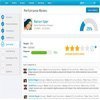 Realize the potential of your people and talent with cornerstone performance and ensure your people are agile. Assess skills, identify top performers, and close skill gaps. The software provides you with a series of easy-to-understand visualizations to ensure a holistic view of your workforce.
Realize the potential of your people and talent with cornerstone performance and ensure your people are agile. Assess skills, identify top performers, and close skill gaps. The software provides you with a series of easy-to-understand visualizations to ensure a holistic view of your workforce. The Factorial program provides you with all the necessary functionalities you need to manage your HR processes. Factorial offers features for time tracking, absence recording, payroll, digital signature, digital personnel file, applicant management, onboarding and offboarding and company performance, among others. Get a good overview of the state of your company!...
The Factorial program provides you with all the necessary functionalities you need to manage your HR processes. Factorial offers features for time tracking, absence recording, payroll, digital signature, digital personnel file, applicant management, onboarding and offboarding and company performance, among others. Get a good overview of the state of your company!...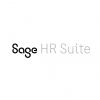 - Strengthen the personal responsibility of your employees and automate routine tasks.
- Agree on goals individually and tailored.
- Easily perform evaluation, feedback and compensation.
- Benefit from transparency at all times.
- Prepare your employee appraisals optimally.
- Conduct discussions in a timely and structured manner and document them conveniently and transparently.
- Strengthen the personal responsibility of your employees and automate routine tasks.
- Agree on goals individually and tailored.
- Easily perform evaluation, feedback and compensation.
- Benefit from transparency at all times.
- Prepare your employee appraisals optimally.
- Conduct discussions in a timely and structured manner and document them conveniently and transparently.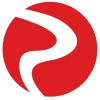 Rexx HR Software digitalizes all HR processes - from personnel administration to organization, payroll preparation, and reporting. The centralized digital personnel file, self-service portals, and automated workflows ensure efficient, transparent, and compliant HR management. ISO 27001:2022 certified and fully GDPR-compliant, Rexx HR combines security, performance, and ease of use in one powerful suite.
Rexx HR Software digitalizes all HR processes - from personnel administration to organization, payroll preparation, and reporting. The centralized digital personnel file, self-service portals, and automated workflows ensure efficient, transparent, and compliant HR management. ISO 27001:2022 certified and fully GDPR-compliant, Rexx HR combines security, performance, and ease of use in one powerful suite. With EASY SOFTWARE, you can design your HR processes efficiently and integrate them optimally into a holistic HR management system. Easy HR offers you all the options for successful recruiting, efficient onboarding, a self-service portal for your managers and employees as well as functionalities for training and continuing education.
With EASY SOFTWARE, you can design your HR processes efficiently and integrate them optimally into a holistic HR management system. Easy HR offers you all the options for successful recruiting, efficient onboarding, a self-service portal for your managers and employees as well as functionalities for training and continuing education. Sage Business Cloud People is a world-leading HR and People system that enables companies to attract, develop and retain talent in a completely new way. Sage Business Cloud People is designed specifically for midsize and multinational companies (with 150 to 5,000 employees). The solution is quick to implement, easy to use, and can be customized to meet your unique business needs.
Sage Business Cloud People is a world-leading HR and People system that enables companies to attract, develop and retain talent in a completely new way. Sage Business Cloud People is designed specifically for midsize and multinational companies (with 150 to 5,000 employees). The solution is quick to implement, easy to use, and can be customized to meet your unique business needs.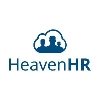 Manage recruiting, HR administration and payroll easily with HeavenHR. From hiring new employees to time recording and shift planning, you have all essential functionalities together on one platform. You can also map the entire recruitment process from posting to hiring.
Manage recruiting, HR administration and payroll easily with HeavenHR. From hiring new employees to time recording and shift planning, you have all essential functionalities together on one platform. You can also map the entire recruitment process from posting to hiring.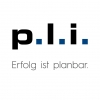 The PROCESS HR software solution includes, among other things, a digital personnel file for easy management of personnel data, workforce scheduling for an optimized duty roster, as well as employee self-service and reports and dashboards for key performance indicators.
The PROCESS HR software solution includes, among other things, a digital personnel file for easy management of personnel data, workforce scheduling for an optimized duty roster, as well as employee self-service and reports and dashboards for key performance indicators.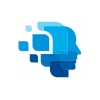 Learn how PeoplePLAN is revolutionizing workforce cost planning! Our web-based SaaS solution enables real-time labor cost planning and provides flexibility to account for employee turnover, new hires and cost adjustments. Increase your efficiency in personnel management with PeoplePLAN.
Learn how PeoplePLAN is revolutionizing workforce cost planning! Our web-based SaaS solution enables real-time labor cost planning and provides flexibility to account for employee turnover, new hires and cost adjustments. Increase your efficiency in personnel management with PeoplePLAN.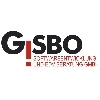 GisboTimer 4 in 1 software solution - four modules that communicate perfectly with each other. GisboTimer can be adapted to customer-specific requirements. You and your employees benefit from fair, transparent planning as well as error-free time accounts, simple vacation planning and appropriate bonus calculations.
GisboTimer 4 in 1 software solution - four modules that communicate perfectly with each other. GisboTimer can be adapted to customer-specific requirements. You and your employees benefit from fair, transparent planning as well as error-free time accounts, simple vacation planning and appropriate bonus calculations.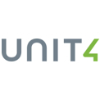 The cloud-based ERP solution Unit4 Business World offers service companies numerous efficient functions with its various modules. The HR module includes, among other things, talent and resource management, job management, absence management, employee assessment functions, knowledge sharing as well as qualification management and much more. Unit4 products are easy to use, easily customizable and extremely flexible. Whether it's a shift system, compensation or disciplinary measures, everything can be mapped with the powerful functions.
The cloud-based ERP solution Unit4 Business World offers service companies numerous efficient functions with its various modules. The HR module includes, among other things, talent and resource management, job management, absence management, employee assessment functions, knowledge sharing as well as qualification management and much more. Unit4 products are easy to use, easily customizable and extremely flexible. Whether it's a shift system, compensation or disciplinary measures, everything can be mapped with the powerful functions. Efficient personnel management with Sta*Ware BusinessNavigator® HR Management! Manage your HR processes digitally and transparently, from personnel planning to time management. Benefit from a central platform for all relevant employee data - available flexibly and mobile.
Efficient personnel management with Sta*Ware BusinessNavigator® HR Management! Manage your HR processes digitally and transparently, from personnel planning to time management. Benefit from a central platform for all relevant employee data - available flexibly and mobile.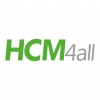 HCM4all offers a modern HR software solution for recruiting, developing and managing employees. All in one system and, of course, cloud-based. Our software is as individual as your company. Whether start-up, medium-sized company or care organization. Our solutions impress with their short implementation times, low training costs and high user experience.
HCM4all offers a modern HR software solution for recruiting, developing and managing employees. All in one system and, of course, cloud-based. Our software is as individual as your company. Whether start-up, medium-sized company or care organization. Our solutions impress with their short implementation times, low training costs and high user experience.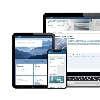 Benefit from the leading software technology for your idea management! target Idea Management is the only solution that maps idea management using SAP data and technology directly. target Idea Management is the software solution for managing your ideas and topics from the company suggestion system (BVW), the continuous improvement process (KVP), and innovation management. target Idea Management software is optimized to meet the requirements of large companies as well as those of medium-sized businesses.
Benefit from the leading software technology for your idea management! target Idea Management is the only solution that maps idea management using SAP data and technology directly. target Idea Management is the software solution for managing your ideas and topics from the company suggestion system (BVW), the continuous improvement process (KVP), and innovation management. target Idea Management software is optimized to meet the requirements of large companies as well as those of medium-sized businesses. The data protection management solution otris privacy offers you targeted analysis and control of corporate data protection and IT security standards. The software can be used across all industries and maps any company structure. The otris privacy STANDARD edition is a fully comprehensive data protection management software that allows you to map your entire data protection organization in a DSGVO-compliant manner. Two additional editions are available for external data protection officers, medium-sized companies and corporate groups.
The data protection management solution otris privacy offers you targeted analysis and control of corporate data protection and IT security standards. The software can be used across all industries and maps any company structure. The otris privacy STANDARD edition is a fully comprehensive data protection management software that allows you to map your entire data protection organization in a DSGVO-compliant manner. Two additional editions are available for external data protection officers, medium-sized companies and corporate groups.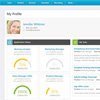 Thanks to Cornerstone's unique application management, you not only get employees with excellent qualifications and experience, but you also benefit from a quick and easy job orientation, boosting your new employees' motivation.
Thanks to Cornerstone's unique application management, you not only get employees with excellent qualifications and experience, but you also benefit from a quick and easy job orientation, boosting your new employees' motivation. Conerstone Onboarding for the perfect, smooth start of new employees. Centralize all onboarding activities! Customize workflows and assign tasks to task owners and taskrovers. Create custom forms to capture key employee information.
Conerstone Onboarding for the perfect, smooth start of new employees. Centralize all onboarding activities! Customize workflows and assign tasks to task owners and taskrovers. Create custom forms to capture key employee information.